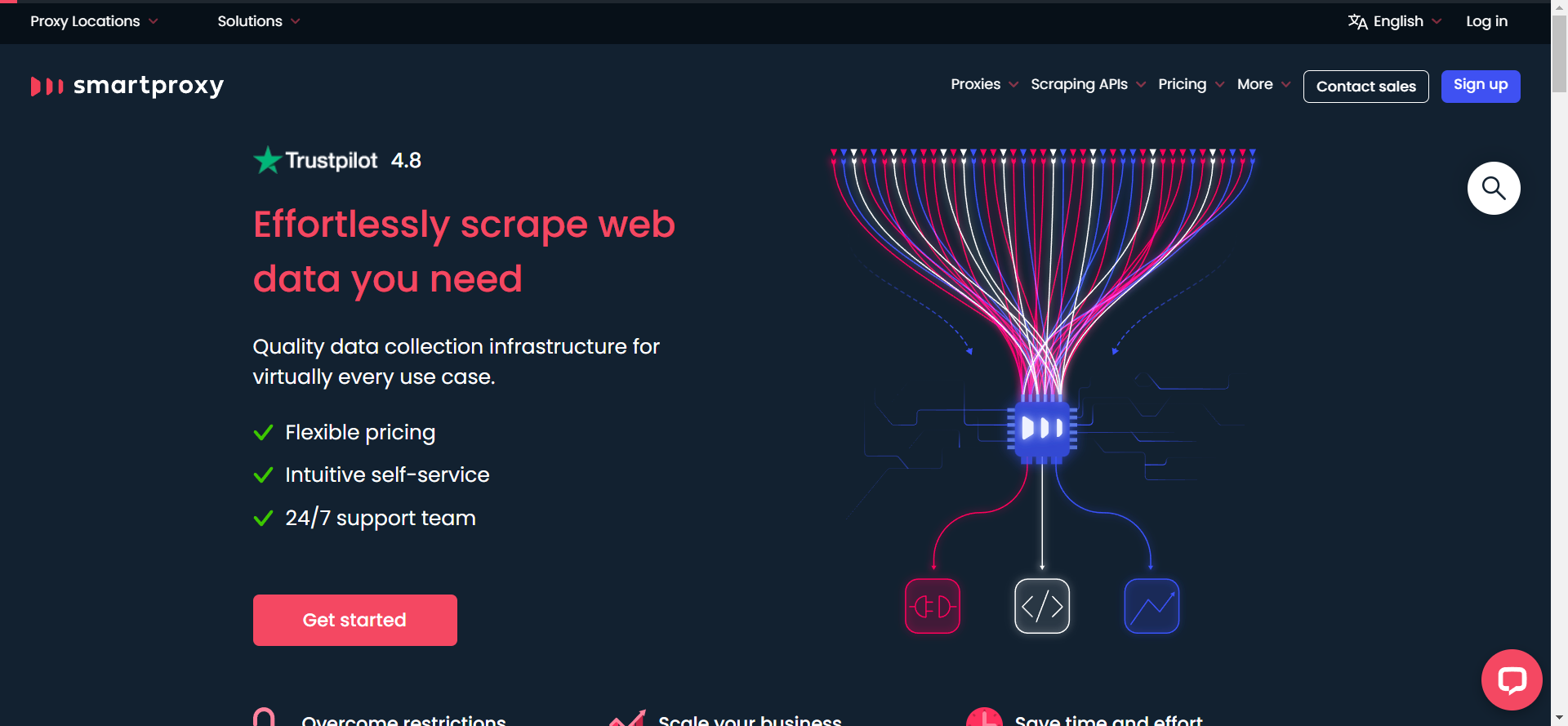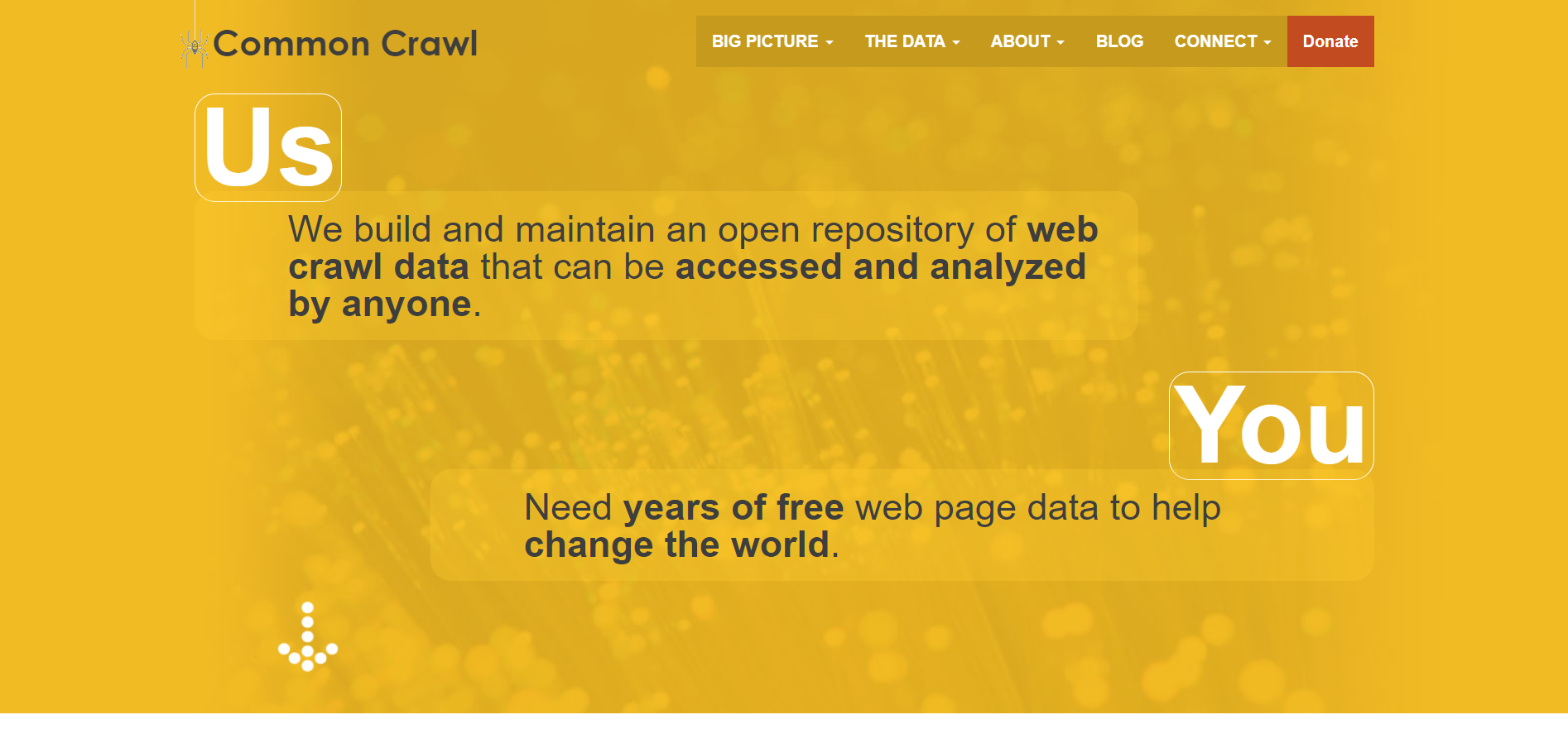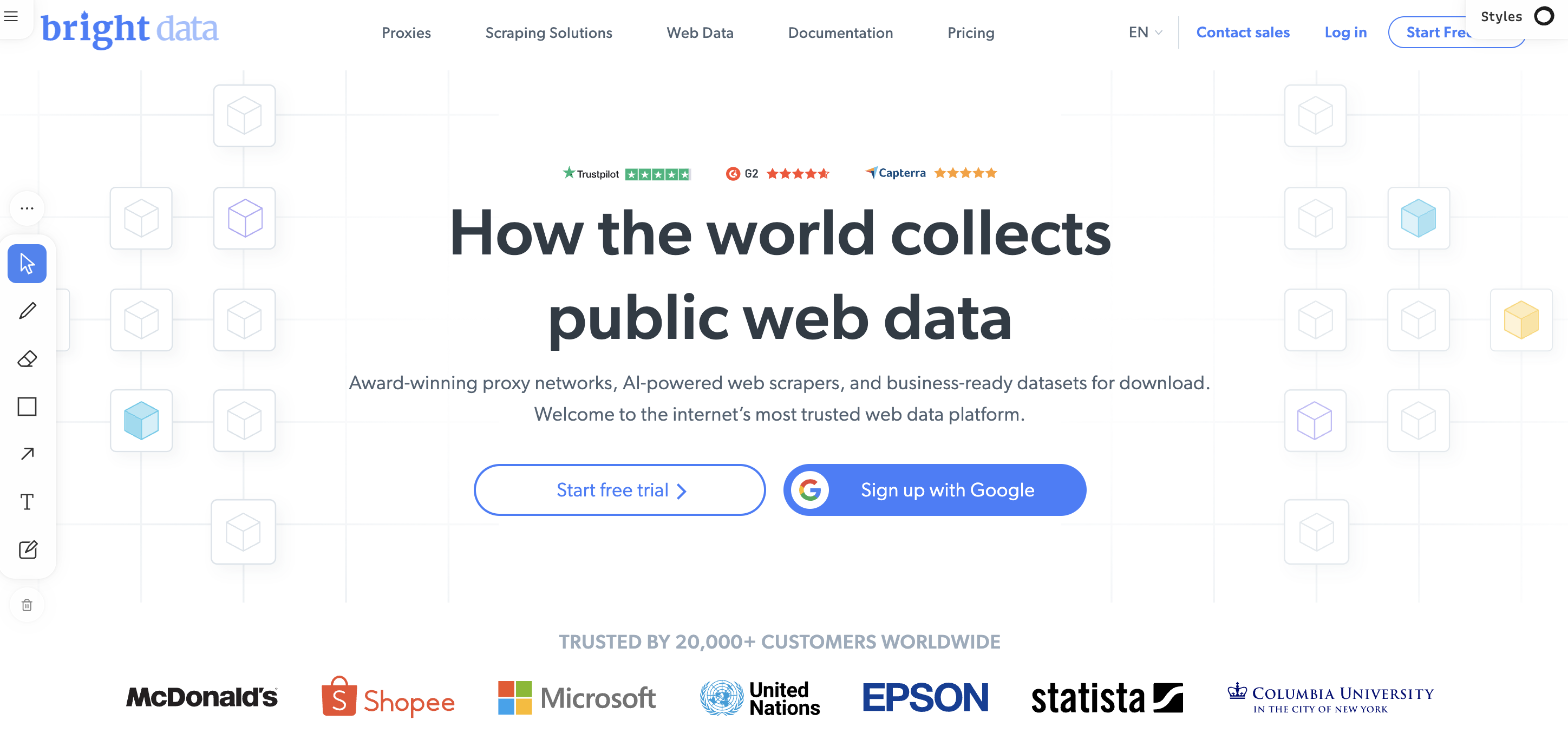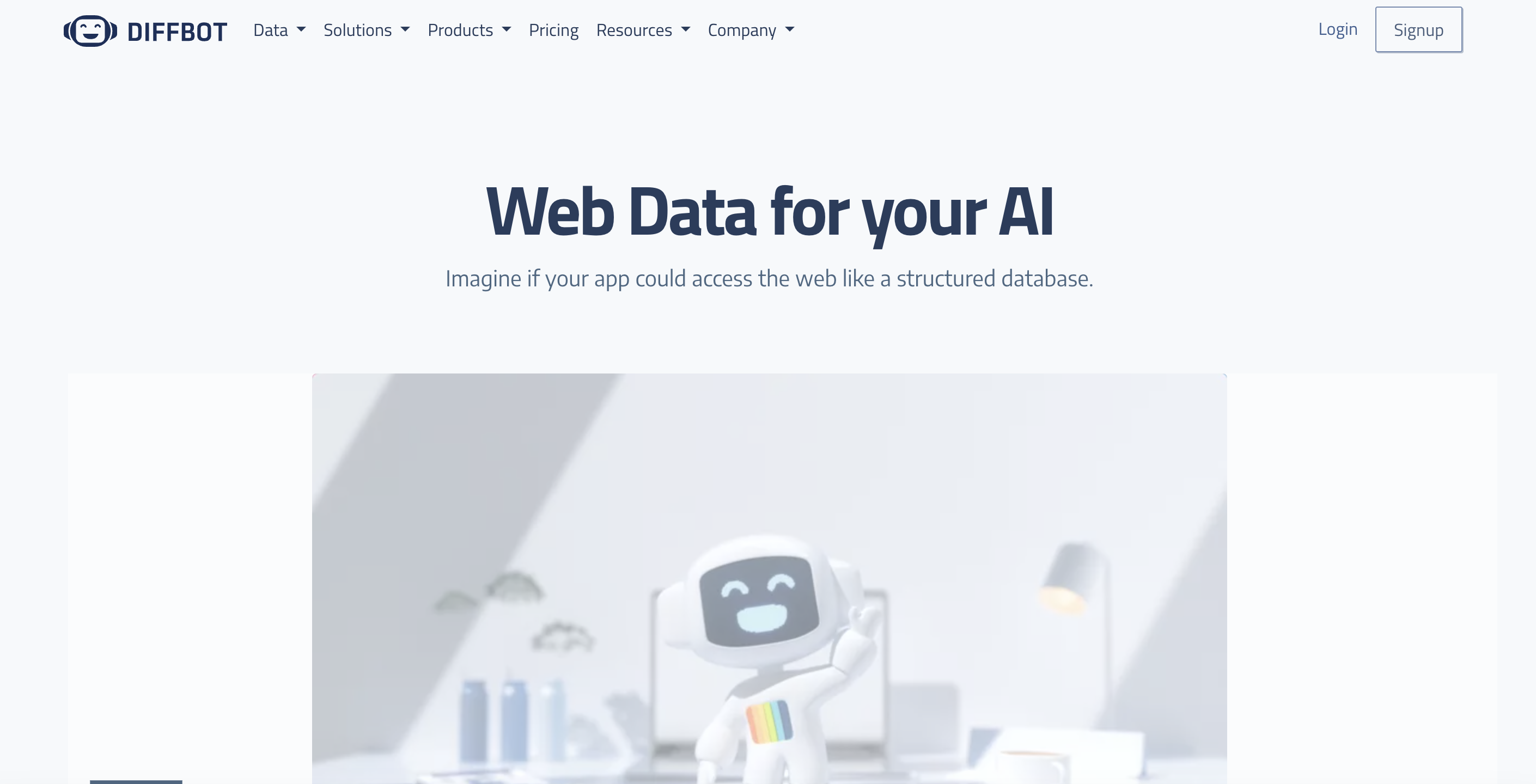Web scraping is essential for data extraction. Here are the top 10 web scraping tools to simplify your tasks.
1. Proxies API

Proxies API is a SaaS tool that handles web scraping complexities. It takes care of CAPTCHAs, user-agent rotation, proxy rotation, and retries.
Key Features:
Pros:
Cons:
Example Usage:
curl "<http://api.proxiesapi.com/?key=API_KEY&render=true&url=https://example.com>"
Register for a free API key and solve IP blocking issues instantly.
2. Smartproxy

Smartproxy offers a reliable proxy network for web scraping.
Key Features:
Pros:
Cons:
3. Scrapy

Scrapy is a powerful Python web scraping framework.
Key Features:
Pros:
Cons:
Example Usage:
import scrapy
class ExampleSpider(scrapy.Spider):
name = 'example'
start_urls = ['<https://example.com>']
def parse(self, response):
yield {
'title': response.css('h1::text').get(),
'description': response.css('p::text').get(),
}
4. Mozenda

Mozenda is a cloud-based web scraping tool with a point-and-click interface.
Key Features:
Pros:
Cons:
5. Dexi

Dexi is a visual web scraping tool with a drag-and-drop interface.
Key Features:
Pros:
Cons:
6. Common Crawl

Common Crawl is an open repository of web crawl data.
Key Features:
Pros:
Cons:
7. Bright Data

Bright Data (formerly Luminati) provides a proxy network for web scraping.
Key Features:
Pros:
Cons:
8. Diffbot

Diffbot is an AI-powered web scraping service.
Key Features:
Pros:
Cons:
9. Heritrix
Heritrix is an open-source web crawler developed by the Internet Archive.
Key Features:
Pros:
Cons:
10. Node-Crawler
Node-Crawler is a web crawling and scraping library for Node.js.
Key Features:
Pros:
Cons:
Example Usage:
const Crawler = require('crawler');
const crawler = new Crawler({
maxConnections: 10,
callback: (error, res, done) => {
if (error) {
console.log(error);
} else {
console.log(res.body);
}
done();
}
});
crawler.queue('<https://example.com>');
Comparison Table
| Tool | Key Features | Pros | Cons |
| Proxies API | Single API call, IP rotation, CAPTCHA solving | Simple API, high-speed proxies, JS rendering | Requires API key |
| Smartproxy | 40M+ rotating proxies, worldwide locations | Fast and stable, IP rotation, user-friendly | Limited free trial |
| Scrapy | Built-in data extraction, asynchronous requests | Open-source, efficient, large community | Steep learning curve |
| Mozenda | No coding required, scheduled extraction | User-friendly, handles complex websites | Limited customization |
| Dexi | Visual editor, handles dynamic websites | Easy to use, JS rendering, collaboration | Higher pricing |
| Common Crawl | Petabytes of web data, free to access | Vast dataset, enables large-scale research | Data may be outdated, requires big data skills |
| Bright Data | 72M+ rotating IPs, residential and datacenter | Large proxy pool, supports multiple protocols | Expensive |
| Diffbot | AI-powered extraction, supports various data types | Saves time on data structuring, improving AI | Limited control over scraping |
| Heritrix | Customizable policies, supports archiving | Free and open-source, powerful and flexible | Requires technical expertise |
| Node-Crawler | Asynchronous, configurable, pagination support | Easy to use with Node.js, flexible | Limited to Node.js environment |
When choosing a web scraping tool, consider factors such as ease of use, customization options, and pricing. Tools like Proxies API and Mozenda offer user-friendly interfaces and handle complexities, while frameworks like Scrapy and libraries like Node-Crawler provide flexibility and control for developers.
Proxies API stands out for its simple API, automatic IP rotation, and CAPTCHA solving capabilities, making it an efficient solution for web scraping tasks. With its free trial of 1000 API calls, it's worth exploring for your next project.